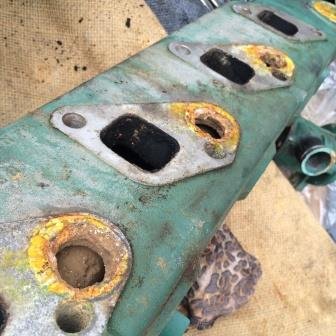Gordon J
Guru
- Joined
- Jul 23, 2015
- Messages
- 1,081
- Location
- USA
- Vessel Name
- Didi Mau
- Vessel Make
- Currently looking for next boat
As we are getting ready to take the boat to the Bahamas from Norfolk, VA, I am going over the engines with a fine tooth comb.
My question concerns coolant. I have no record from the previous owner of coolant being changed. The mechanic who adjusted the valves told me that the boat's blue coolant was extended life, which was good for 10 years. I question how he knows that. The boat has 1250 hours and was commissioned in 2003. The engines are Cummins 6BTA5.9.
How do I tell if the coolant is still good, or whether I need to change? Obviously not changing coolant would save some work and mess. I can by test strips but am unsure what numbers I should be looking for.
Thanks in advance,
Gordon
My question concerns coolant. I have no record from the previous owner of coolant being changed. The mechanic who adjusted the valves told me that the boat's blue coolant was extended life, which was good for 10 years. I question how he knows that. The boat has 1250 hours and was commissioned in 2003. The engines are Cummins 6BTA5.9.
How do I tell if the coolant is still good, or whether I need to change? Obviously not changing coolant would save some work and mess. I can by test strips but am unsure what numbers I should be looking for.
Thanks in advance,
Gordon

